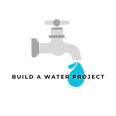Building Wells: A Lifeline for Impoverished Communities
- Asiya Siddiqui
- Sep 23, 2024
- 3 min read
Updated: Nov 25, 2024
By: Asiya Siddiqui
July 27, 2024
Access to clean water is a fundamental human right, yet millions in poverty-stricken areas still lack it. Building water wells in these communities can significantly improve their quality of life. Let’s explore the process of constructing wells and their profound impact on impoverished communities.

The Process of Building a Water Well
1. Site Selection
The first step is selecting an appropriate site, which involves geological surveys and hydrological studies to identify locations with adequate groundwater. Factors such as the water table level, soil composition, and proximity to the community are considered.
2. Drilling
Once a suitable site is chosen, drilling begins. This process can vary depending on the technology used, but it typically involves using a drilling rig to bore a hole deep into the ground. Depending on the water table and local geology, drilling can reach depths ranging from 30 to 300 meters.
3. Casing and Screening
After drilling, a casing (usually made of PVC or steel) is inserted into the borehole to prevent it from collapsing and to keep out contaminants. A screen is placed at the bottom of the casing to filter out sand and sediment while allowing water to enter the well.
4. Development and Pump Installation
The well is then developed to clean out fine materials and improve water flow. This can involve techniques like airlifting or pumping. Finally, a pump is installed, which could be hand-operated or powered by electricity or solar energy, depending on the community’s resources.
5. Testing and Maintenance
Before the well is put into use, water quality tests are conducted to ensure it is safe for consumption. Regular maintenance is also essential to keep the well functional and prevent contamination.
Their Impact Ripples Through Communities
The construction of water wells in impoverished areas brings numerous benefits that contribute to sustainable development and improved living conditions. Access to clean water reduces the incidence of waterborne diseases such as cholera, dysentery, and typhoid. This leads to better overall health, fewer medical expenses, and lower child mortality rates.
Having a reliable water source close to home saves time and energy, particularly for women and children, who often bear the burden of fetching water from distant sources. This allows them to engage in educational and economic activities, thereby improving their prospects and economic status. With easier access to water, children spend less time fetching water and more time in school.
Water wells support agriculture by providing a steady supply of water for irrigation. This boosts crop yields and food security, enabling communities to sustain themselves and generate income through produce. Building wells often involves the local community in the planning, construction, and maintenance processes. This fosters a sense of ownership and responsibility, empowering communities to manage their resources sustainably and independently.
Proof: Water Wells in Sudan
In Sudan, where water scarcity is a significant issue, water-well construction has had transformative effects. Organizations like SAPA-USA have been instrumental in drilling wells that provide clean water to thousands of people. These wells have drastically improved health outcomes, agricultural productivity, and educational opportunities in Sudanese communities.
Building water wells is not just about drilling a hole in the ground; it is about transforming lives. By providing clean, accessible water, wells play a critical role in breaking the cycle of poverty and fostering sustainable development in impoverished communities. The positive ripple effects of clean water access—on health, education, economic stability, and community empowerment—underscore the importance of investing in water infrastructure for a better future.
Support our cause!
.png)
Comments